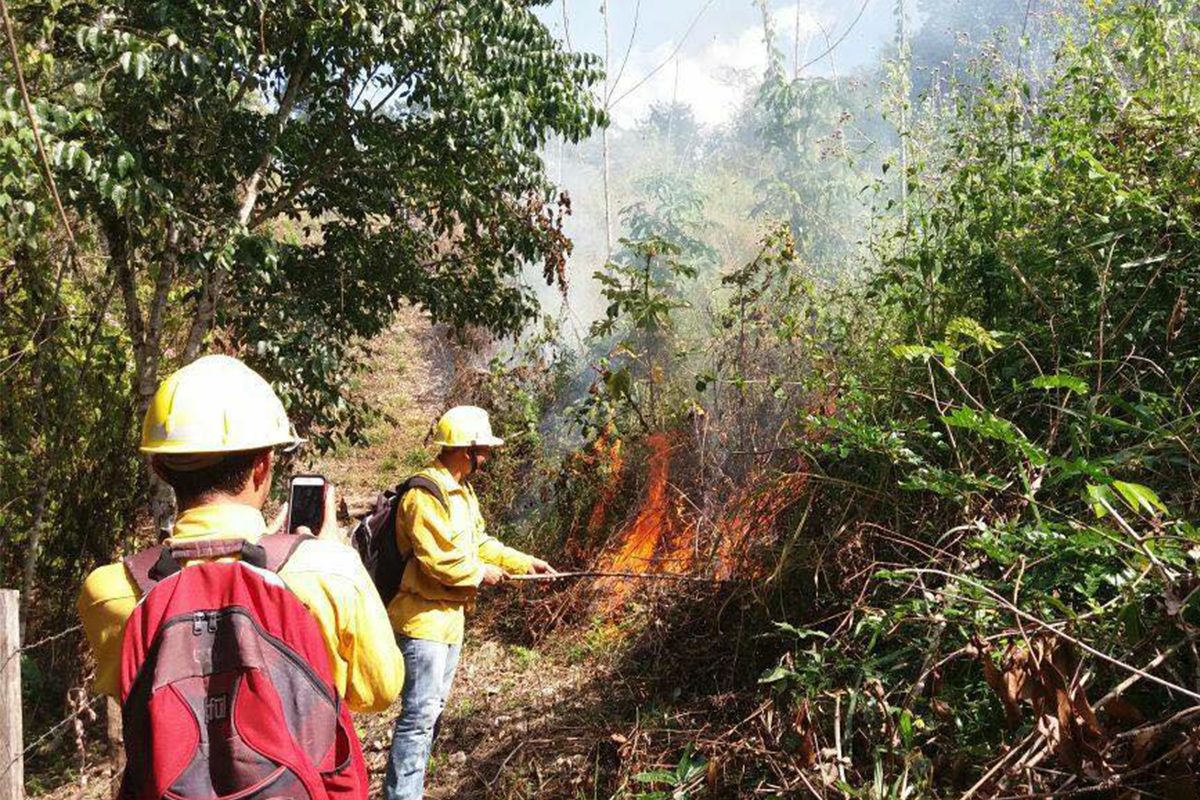Firefighters of the Forest
By Wanda Bautista, July 20, 2017

ACOFOP
As climate change boosts the incidence and duration of forest fires around the world, a small area in Guatemala’s Maya Biosphere Reserve–home to the most biologically diverse and largest tropical forest in Central America–has escaped the fate of surrounding forests.
In April, Guatemala’s forest fires were so large and destructive that the government issued a 30-day, nationwide state of emergency and, along with it, $27 million dollars in emergency funds to extinguish fires across the Reserve’s 2.1 million hectares of forests.
Yet, in 16 percent of the Reserve—an area roughly the size of Rhode Island—the state’s firefighting resources weren’t necessary thanks to the efforts of nine Indigenous communities.
Fifteen years ago, these communities were granted concessions allowing them to live in and sustainably harvest forests products. Since then, they have become the forest’s best protectors, developing and funding their own fire prevention and control programs.
During the 2017 dry season, the communities conducted over 1,000 firefighting patrol missions, building more than 200 campsites throughout the forests to monitor for signs of fire. One of their most effective prevention methods is creating firebreaks. Patrols use these natural and, sometimes, manmade barriers, in concert with existing roads and rivers, to keep fires from spreading into other territories. Efforts like these are the reason that less than 1 percent of all fires occurred in the community concessions this year, according to a new study released by the PRISMA Foundation.
Not only are the communities outperforming all other Guatemalan agencies in preventing and monitoring forest fires, they’re also keeping the deforestation rate low. According to a separate study by the Rainforest Alliance, the concession communities have a near-zero deforestation rate inside their lands, a remarkable feat given that areas directly adjacent to these concessions suffer some of the highest deforestation rates in the Americas.
“We believe that the forests are ours, but they are also the heritage of the Guatemalan people,” said forestry concession leader Jorge Soza. “Although we are able to earn a living from what the forests produce, our primary purpose is to take care of them and to make sure nothing damages them.”
Unfortunately, the work of Guatemala’s forest communities is now at risk.
Each community concession received a 25-year contract, and the oldest expires in five years. In addition, competing interests in their lands related to drug trafficking, industrial agriculture, extensive cattle ranching and oil extraction also make the concessions’ renewal uncertain.
This is a critical time for Guatemala’s forests, says Andrew Davis, author of the PRISMA study. “Failure to renew the concessions will damage the model that Guatemala has created, which represents an international solution to the destruction of tropical forests,” Davis said. “The concessions are the last barrier standing to protect the ecosystems and ancient Mayan heritage of Guatemala contained in the Biosphere.”
At a time when the world is desperately looking for solutions to limit and control forest fires, Guatemala’s forest communities demonstrate that the solution is quite simple: hand over control of forests to the people who live in them.
